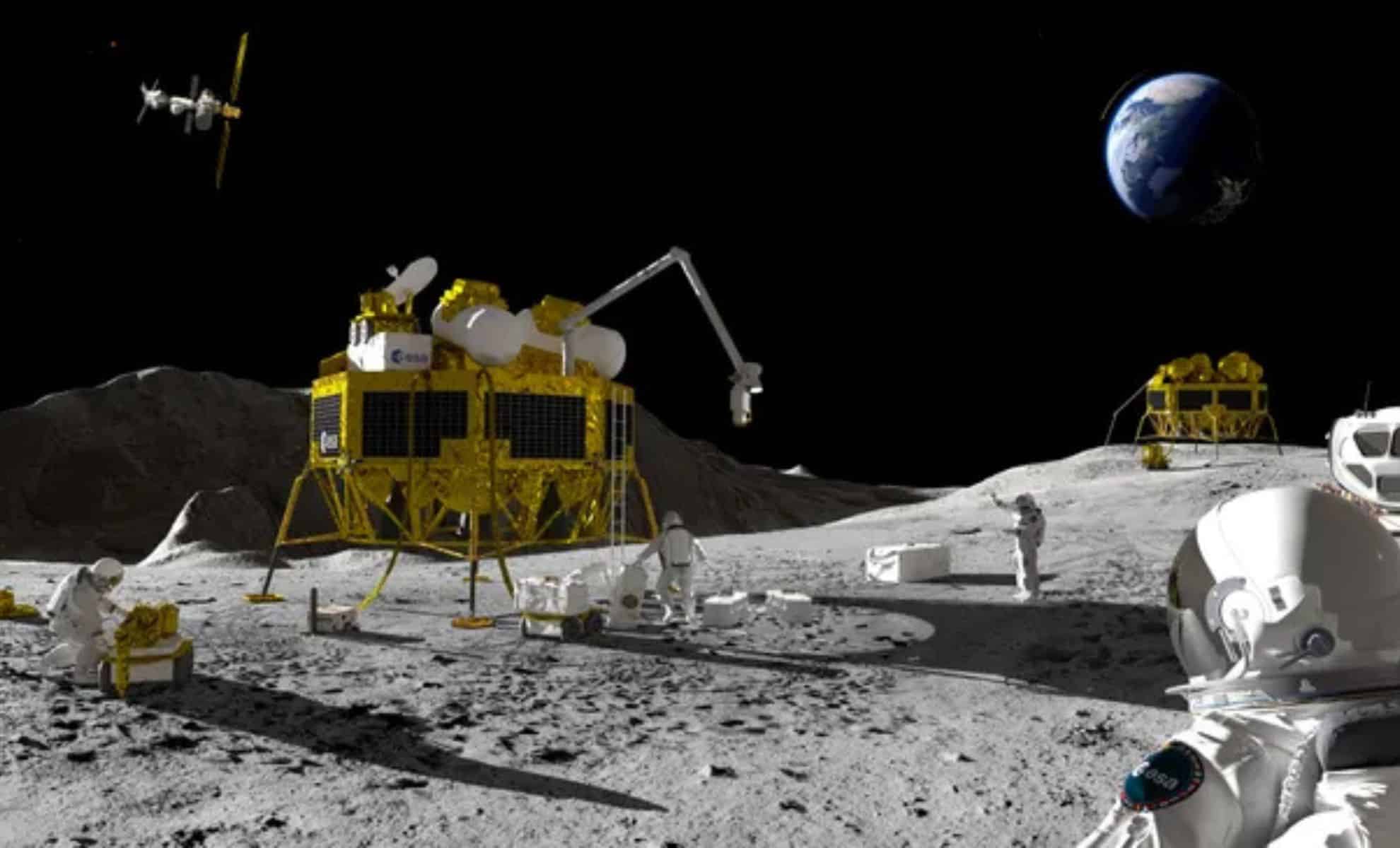ESA’s Moonlight programme is poised to revolutionize lunar exploration by establishing Europe’s first dedicated satellite constellation for communication and navigation services. With over 400 missions planned in the next two decades, Moonlight will support autonomous landings, surface mobility, and high-speed data transfer between Earth and the Moon. Through international partnerships, including collaborations with NASA and JAXA, the program will set the stage for future space exploration and lay the groundwork for Mars missions.
ESA’s Moonlight Program Aims for a New Dawn in Lunar Exploration

The European Space Agency (ESA) has launched a groundbreaking initiative to support lunar exploration through its Moonlight Lunar Communications and Navigation Services (LCNS) program.
Unveiled at the International Astronautical Congress in Milan, the program aims to establish a comprehensive lunar telecommunications and navigation network. This ambitious plan is set to support over 400 planned lunar missions in the next two decades, marking a major step toward building a sustainable lunar economy and advancing future space exploration.
Building a Lunar Communication and Navigation Network
The Moonlight program aims to create a constellation of five lunar satellites that will enable precise landings and high-speed communication between Earth and the Moon. This network will be essential for space agencies and private companies as they plan to explore and utilize the lunar surface. ESA’s Director General Josef Aschbacher highlighted the importance of this development, saying, "ESA is taking the crucial step in supporting the future commercial lunar market, as well as ongoing and future lunar missions."
The first phase of this plan includes the launch of Lunar Pathfinder, a communications relay satellite developed by Surrey Satellite Technology Ltd (SSTL), which is scheduled for 2026. Lunar Pathfinder will provide critical communication services and test navigation satellites for lunar use. After this initial deployment, Moonlight’s services are expected to begin by 2028, with full operations slated for 2030. The goal is to establish a reliable communication and navigation system that will streamline mission planning and reduce costs.
Targeting the Lunar South Pole
One of the key focuses of the Moonlight program is the lunar south pole, an area that has become a focal point for exploration. The region’s unique conditions, such as permanent sunlight and shadowed craters that may contain water ice, make it a prime candidate for long-term lunar habitation. ESA and its partners plan to prioritize coverage in this area to support future exploration and resource extraction.
Javier Benedicto, ESA’s Director of Navigation, emphasized the program’s significance: “The Moonlight [agreement] we are signing today is the backbone of the future navigation system around and on the surface of the Moon.” The constellation's coverage of the south pole will deliver essential data to astronauts and robotic explorers, helping optimize surface operations and exploration efficiency.
This strategic focus aligns with NASA’s Artemis program, which aims to return astronauts to the Moon and establish a sustainable human presence. ESA’s collaboration in the Artemis Gateway project underscores Europe’s commitment to international lunar exploration. In addition, ESA’s Argonaut spacecraft, set to land on the Moon in 2031, further emphasizes the agency’s long-term vision for lunar exploration.
Collaboration with Global Partners
The Moonlight program is a joint effort involving key international partners, such as NASA and Japan’s Aerospace Exploration Agency (JAXA). These partnerships are critical for ensuring that the Moonlight infrastructure is compatible with other global lunar systems. One key element of this collaboration is the LunaNet framework, which sets communication and navigation standards for future lunar systems.
“ESA is proud to be working with industry and member states to ensure that our technological capabilities can support and foster cooperation on the Moon,” said Aschbacher. Through the LunaNet framework, Moonlight will establish a globally compatible network, with the first lunar navigation interoperability tests set for 2029. These collaborative efforts aim to create a robust foundation for future missions and generate commercial opportunities in cislunar space.
Telespazio, a leading space systems developer, is a major industrial partner in the Moonlight program. Gabriele Pieralli, CEO of Telespazio, stressed the importance of this collaboration, saying, "Leading a prestigious pan-European team, Telespazio is committed to creating the conditions for a stable and secure presence on the Moon while simultaneously opening up extraordinary commercial opportunities for Europe."
Expanding Beyond the Moon: Mars Communication and Navigation
ESA’s ambitions go beyond lunar exploration. The agency is already planning for future Mars missions and is laying the groundwork for the Mars Communication and Navigation Infrastructure (MARCONI). The experience and technology gained from the Moonlight program will be critical in developing this infrastructure, which will support future human exploration of the Red Planet.
By leveraging the knowledge and innovations from Moonlight, ESA hopes to contribute to a multi-planetary future. The Mars infrastructure will provide essential communication and navigation services for Mars missions and offer valuable insights into how technologies perform in extraterrestrial environments.
A Vision for the Future of Space Exploration
The Moonlight program represents a significant milestone in ESA’s role in future space exploration. By creating a dedicated lunar communication and navigation infrastructure, ESA is taking a critical step toward building a sustainable lunar economy. As Dr. Paul Bate, Chief Executive of the UK Space Agency, noted, “The growth of a commercial lunar economy can bring real benefits back to Earth.”
With strong support from industrial and institutional partners, the Moonlight program is set to revolutionize lunar exploration. As ESA continues to collaborate with international partners and develop cutting-edge technologies, it is laying the foundation for the next era of space exploration—one that will see humanity not only return to the Moon but also expand its reach to Mars and beyond.



